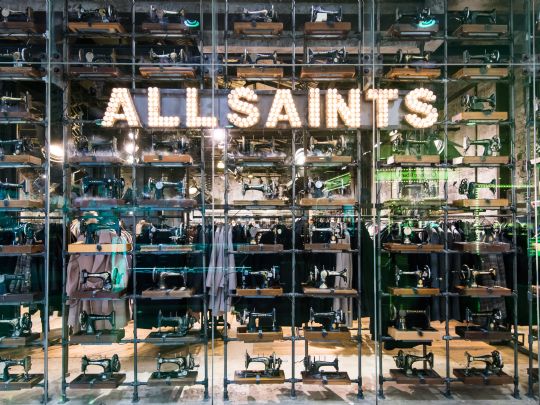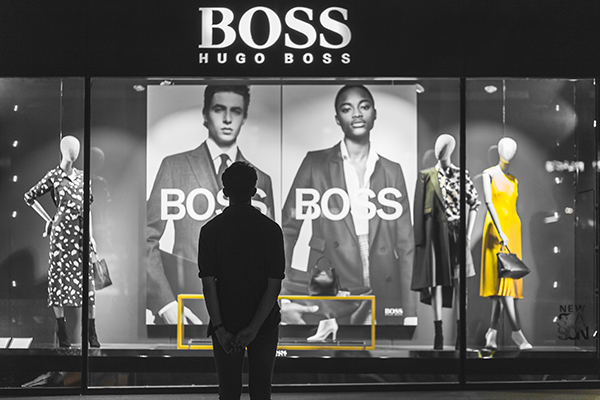Store theft - by both staff and customers - is on the increase and, with a recession biting, retailers are keen to cut costs and improve the bottomline: hardly surprising then that most vendors of loss prevention systems are reporting healthy orderbooks and numerous enquiries, observes Will Hadfield
In the Christmas special of BBC comedy Gavin & Stacey, Gavin’s best friend Smithy tries to buy his presents on the cheap using Stacey’s Marks and Spencer staff discount card. When Stacey tells him: “you can’t use it - it’s a sackable offence to share our discount.” Smithy responds: “what’s the point of working here if your friends can’t share your discount?”
Abusing staff discount cards is not the only way to defraud a retailer, but it is one of the most popular. The show, which was aired three months after the bankruptcy of Lehman Brothers, identified a growing trend: people have become more willing to steal from retailers as the recession has taken hold and unemployment has climbed. Retailers will find out how much of their industry’s sales were lost to fraud and incompetence (some goods are lost rather than stolen) in 2009 when later this year the Centre for Retail Research in Nottingham publishes its annual survey of the losses that the sector suffers.
The new figures are likely to be bad. The most recent Global Retail Theft Barometer, which the centre published last November, covers 2008 and it shows that retail crime is getting worse. In 2008, retailers lost 1.37 per cent of their sales through theft - by employees or the general public - and inadequate supply chains that led staff or suppliers to misplace goods accidentally. The survey shows the reversal of an earlier trend. Companies had appeared to be winning their private war on theft and failing supply chains. In 2006, shops lost 1.34 per cent of their revenues. In 2007, they lost just 1.3 per cent. Now it seems the improvement was illusory. Loss prevention teams that thought their efforts were helping may have overlooked the real cause of falling losses: the once booming economy.
Crime busters
In recognition of the growing problem of theft, retailers have hired a small army of former coppers to sniff out crime. Their job is to identify the scams that their own staff use either on their own or in conjunction with members of the public. The conventional tools of their trade are well known: closed-circuit television (CCTV) cameras and electronic article surveillance (EAS) tags that sound an alarm when they are taken outside the shop without first being deactivated. The ex-policeman’s main tool, however, is data and lots of it. Suppliers of business intelligence (BI) software have developed new applications that enable loss prevention teams to analyse the data produced by the retailer’s other IT systems - especially the PoS - to find evidence of a crime.
Retailers have two different ways to sift their data. The first is to buy a relatively cheap Online Analytical Processing (Olap) cube that sits atop the company’s data warehouse and allows the loss prevention teams to run in queries in multiple dimensions at the same time. For example, an organisation could look up how many times the number of goods in a basket triggered a bonus to a member of staff and who collected those bonuses the most often. Loss prevention Olap cubes are often applications that come within a larger BI platform. They typically run on SQL Server and have the capability of taking data from any combination of front-end applications.
The second, more expensive, method of analysing data is to set up a second database which replicates the retailer’s data warehouse. Companies cannot simply interrogate their existing data warehouses. The searches would take too long and the data in the data warehouse is often incomplete, says Geoff Chaplin, the head of in-store alliances at Fujitsu, which partners loss prevention software specialist IntelliQ in Europe. “You want to take the data from the lowest level of transaction possible, because often, when data travels to a data warehouse, the system throws away useful information such as voids,” says Chaplin.
Once these systems are in place, retailers can quickly find ways of paying back the cost of their investment. Theft is more prevalent at some retailers than it is at others. Fashion and accessories providers suffer the most with lost revenues amounting to 1.84 per cent of revenues in 2008, according to the survey. Auto parts and building materials companies are also targeted by thieves. They lost 1.83 per cent of revenues. Perhaps because it is such an obvious target for thieves, alcohol has been well protected with off licences losing only 0.9 per cent of revenues - the lowest rate of any group of retailers.
Some of the losses being reported come from supply chain problems. Loss prevention systems can quickly identify losses that come from ‘process’ mistakes so that they can move on to identifying fraud. IntelliQ was introduced at one major retailer that offered full refunds to people who turned up with a receipt. The system discovered that staff had mistakenly refunded the goods without the presentation of a receipt. The problem was one of staff training and dishonest customers, but thanks to the software it was easily identified and rectified.
Retailers without BI systems of their own often know that they have a problem with staff and customer fraud. However, because they have no means of analysing their data, they cannot do anything about the problem. They let things slip, says Alister Jones, senior consultant at K3, which recently introduced the K3 Retail LP, a suite of analysis and evidence gathering tools that supports audit teams as they focus their efforts on store and employee theft. “A lot of our customer base are not doing basic analysis of their business yet. People are gradually getting up to speed with good healthy BI solutions which tell them where they are making and losing money in their business,” he says. “If you do not have a good understanding generally of how your stock is managed, trying to launch a focused loss prevention system will lead you down some blind alleyways.”
Some of the most promising areas for identifying waste can be found in how retailers manage refunds, discounts and loyalty systems. “We are seeing lots of abuse of loyalty cards often with the employee using their own card for other people’s transactions,” says Chaplin. Employee loyalty cards have been found that use 27 different credit card numbers. One of the worst cases of fraud took place in a shopping centre where the employees of the different stores used each other’s staff discount cards so frequently that 20 per cent of all transactions involved such a card. Smithy would be proud.
Beyond Channels: Redefining retail with Unified Commerce
This Retail Systems fireside chat with Nikki Baird, Vice President, Strategy & Product at Aptos will explore how unified commerce strategies enable retailers to tear down these barriers and unlock new levels of operational agility and customer satisfaction.
The future of self-checkout: Building a system that works for consumers and retailers
In this webinar, industry leaders discussed what the future of self-checkout looks like and how retailers can make the technology work for everyone.
© 2024 Perspective Publishing Privacy & Cookies










Recent Stories